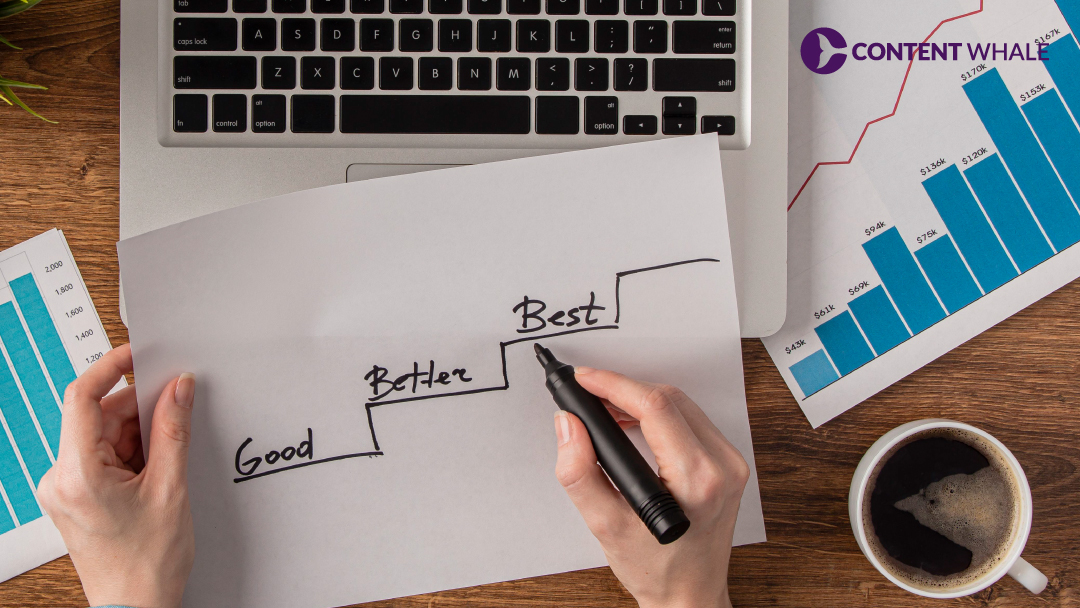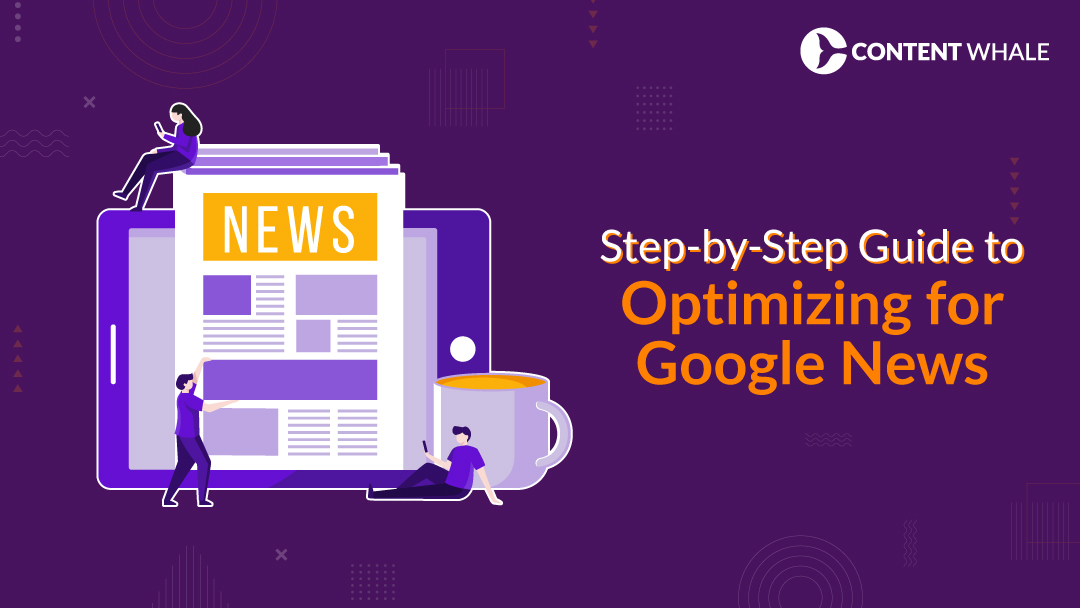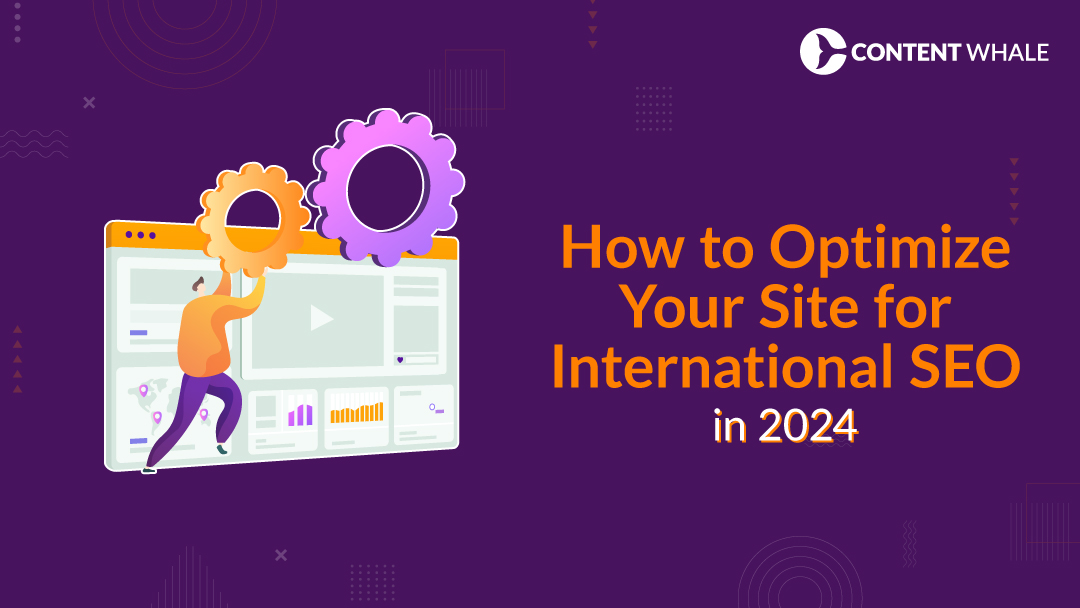Content personalization is the process of tailoring digital content to meet individual user needs and preferences. This approach has become essential because it directly impacts the user experience, making interactions more relevant and engaging.
Personalized content matters today more than ever. It helps in creating meaningful connections with users, which leads to increased engagement and higher conversion rates. Personalized marketing ensures that the content delivered resonates with the audience, providing them with what they need exactly when they need it.
This blog will cover the essentials of content personalization, starting with a clear definition and types. We’ll explore the key benefits, effective strategies, and tools available for implementing content customization. Finally, we will discuss how to measure the success of your personalized content strategy.
Understanding Content Personalization
1. Defining Content Personalization
Content personalization involves customizing digital content to suit users’ individual preferences and behaviors. It ensures that each user receives a unique and relevant experience.
2. Types of Content Personalization
There are two primary types of personalized content:
- Demographic Personalization: Tailor the content based on user characteristics like age, gender, and location.
- Behavioral Personalization: Uses data on user actions, such as past purchases and browsing history, to customize content.
3. Importance in Digital Marketing
The importance of content personalization in digital marketing cannot be overstated. With users expecting more relevant and targeted experiences, personalized marketing has become a necessity for businesses. By delivering personalized content, businesses can significantly enhance the user experience. This approach makes users feel valued and understood, increasing their engagement with the content.
Understanding and implementing content personalization is essential for creating a more engaging and effective digital experience. By focusing on demographic and behavioral data, businesses can deliver more relevant and impactful content, ultimately driving better results and enhancing the overall user experience.
Benefits of Content Personalization

1. Enhanced User Experience
Content personalization significantly enhances the user experience by delivering relevant and tailored content. When users encounter content that speaks directly to their needs and interests, they feel understood and valued. This leads to more satisfying interactions with your brand, increasing the likelihood of repeat visits and deeper engagement.
2. Increased Engagement and Time on Site
Personalized content naturally encourages users to spend more time on your website. When visitors find content that aligns with their preferences, they are more inclined to explore further. This increased engagement translates into more time spent on your site, which positively impacts your SEO rankings and overall site performance. A study by Evergage revealed that 88% of marketers reported measurable improvements due to personalization, with increased engagement being a key benefit.
3. Improved Conversion Rates
One of the most significant benefits of personalized marketing is the boost in conversion rates. By presenting users with content that is specifically tailored to their interests and needs, they are more likely to take the desired action, whether it’s making a purchase, signing up for a newsletter, or downloading a resource. According to research by Epsilon, 80% of consumers are more likely to make a purchase when brands offer personalized experiences. Content customization creates a seamless journey from interest to conversion, driving higher sales and achieving marketing goals more efficiently.
4. Greater Customer Loyalty and Retention
Delivering personalized content fosters a stronger connection between the brand and the customer. When users feel that a brand understands and caters to their individual needs, their loyalty increases. This leads to higher customer retention rates, as satisfied customers are more likely to return and engage with the brand repeatedly. A Salesforce report highlighted that 70% of consumers say a company’s understanding of their personal needs influences their loyalty.
5. Better Insights and Data Utilization
Implementing content personalization allows businesses to gather valuable data about user preferences and behaviors. This data can be used to refine marketing strategies further and improve overall business decisions. The insights gained from personalized marketing efforts can lead to more effective campaigns and better resource allocation.
The benefits of content personalization are substantial. Enhanced user experience, increased engagement, improved conversion rates, greater customer loyalty, and better data utilization all contribute to the overall success of digital marketing efforts. By focusing on content customization and personalized marketing, businesses can create more meaningful interactions with their audience, leading to better results and long-term relationships.
Strategies for Effective Content Personalization

1. Segmenting Your Audience
Effective content personalization starts with understanding your audience. Segmenting your audience involves dividing your user base into distinct groups based on shared characteristics or behaviors. This could be based on demographics, purchase history, or browsing behavior. By segmenting your audience, you can create personalized content that resonates with each specific group, leading to a more relevant and engaging user experience.
2. Using Data and Analytics for Personalization
Data is the backbone of personalized marketing. Utilizing data and analytics helps you understand user preferences, behaviors, and trends. Tools like Google Analytics and customer relationship management (CRM) systems can provide valuable insights. By analyzing this data, you can implement content customization that addresses the unique needs and interests of your users, enhancing their experience with your brand.
3. Implementing Dynamic Content
Dynamic content is a powerful tool for content personalization. It allows you to change the content displayed on your website or emails based on user interactions and preferences in real time. For instance, an e-commerce site might show different product recommendations to different users based on their previous browsing or purchase history. This level of personalized content can significantly increase engagement and conversion rates.
4. Personalizing Email Marketing Campaigns
Email marketing is an effective channel for personalized marketing. By personalizing your email campaigns, you can increase open rates, click-through rates, and conversions. Use data to segment your email list and tailor your messages to each segment. Personalized subject lines, product recommendations, and special offers can make your emails more relevant and engaging. According to Campaign Monitor, emails with personalized subject lines are 26% more likely to be opened.
5. Leveraging Automation Tools
Automation tools can streamline the process of content personalization. Tools like HubSpot, Marketo, and Mailchimp offer features that help you automate and personalize your marketing efforts. These tools can track user behavior, segment your audience, and deliver personalized content at scale. Automation ensures that your content customization is timely and relevant, improving the overall user experience.
By implementing these strategies, you can effectively personalize your content and enhance the user experience. Segmenting your audience, using data and analytics, implementing dynamic content, personalizing email campaigns, and leveraging automation tools are all essential components of a successful personalized marketing strategy. These approaches will help you deliver more relevant and engaging content, ultimately driving better results for your business.
Tools for Content Personalization
| Tool | Key Features | Pros | Cons | Best For | Pricing Model |
|---|---|---|---|---|---|
| HubSpot | CRM, Email Marketing, Analytics, Segmentation | User-friendly, Comprehensive features, Integrates well with other tools | Can be expensive for small businesses | Businesses looking for an all-in-one solution | Tiered pricing based on features and contacts |
| Optimizely | A/B Testing, Experimentation, Personalization | Data-driven insights, Easy to use, Powerful testing capabilities | Steeper learning curve for beginners | Companies focusing on website optimization and experimentation | Custom pricing based on needs |
| Adobe Target | Machine Learning, Real-time Personalization, Integration with Adobe Suite | Robust feature set, Seamless integration with Adobe products | High cost, Complex setup | Large enterprises with complex personalization needs | Custom pricing based on needs |
| Dynamic Yield | Omnichannel Personalization, Testing and Optimization, Real-time data | Flexible, Easy to implement, Strong support system | Pricing not transparent, Can be pricey | Retailers and e-commerce businesses | Custom pricing based on needs |
| Monetate | Real-time Testing, Segmentation, Personalization | Strong focus on customer experience, Easy to integrate | Limited analytics capabilities compared to others | Companies looking for real-time personalization | Custom pricing based on needs |
1. Overview of Popular Tools
Several tools are available to help implement content personalization effectively. These tools offer various features that cater to different aspects of personalized marketing, ensuring that your content reaches the right audience at the right time.
i) HubSpot
HubSpot is a comprehensive marketing platform that provides numerous features for content customization. It includes tools for CRM, email marketing, and analytics, allowing you to create and manage personalized content seamlessly. HubSpot’s segmentation capabilities enable you to target specific audience groups with tailored messages, enhancing the overall user experience.
ii) Optimizely
Optimizely focuses on A/B testing and experimentation, making it ideal for businesses looking to optimize their personalized content. It allows you to test different versions of your website and marketing materials to see which performs best. This data-driven approach ensures that your content customization efforts are effective and impactful.
iii) Adobe Target
Adobe Target offers robust features for testing and targeting personalized content. It uses machine learning to deliver real-time content personalization based on user behavior and preferences. Adobe Target’s integration with other Adobe products makes it a powerful tool for creating a cohesive and personalized user journey.
2. Choosing the Right Tool
Selecting the right tool for content personalization depends on your specific needs, budget, and technical expertise. Consider the following factors when choosing a tool:
- Ease of Use: Ensure the tool is user-friendly and easy to integrate with your existing systems.
- Scalability: Choose a tool that can grow with your business and handle increasing amounts of data.
- Features: Look for features that align with your personalized marketing goals, such as segmentation, automation, and analytics.
3. Benefits of Using Personalization Tools
Using these tools helps streamline your content customization process, ensuring that your personalized content is both effective and efficient. They provide insights into user behavior, allowing you to make data-driven decisions that enhance the user experience. Additionally, these tools can automate many aspects of personalized marketing, saving you time and resources.
By leveraging tools like HubSpot, Optimizely, and Adobe Target, you can enhance your content personalization efforts and deliver more relevant and engaging content to your audience. This will improve user engagement, increase conversion rates, and foster long-term customer loyalty.
Measuring the Success of Personalized Content

1. Key Metrics to Track
It’s essential to monitor specific metrics to gauge the effectiveness of your content personalization efforts. Tracking these metrics helps you understand how well your personalized content is performing and where improvements are needed.
- Engagement Rates: Measure how users interact with your content. High engagement rates indicate that your content customization is resonating with your audience. Metrics such as click-through rates, time spent on a page, and social shares are good indicators of engagement.
- Conversion Rates: This is a critical metric for evaluating the success of your personalized marketing campaigns. Monitor the percentage of users who take the desired action, such as making a purchase or signing up for a newsletter. Higher conversion rates typically reflect successful personalization efforts.
- Customer Retention Rates: Assessing how many users return to your site or continue to engage with your brand over time can provide insights into the long-term impact of your content personalization strategies.
2. Tools for Measuring Performance
Several tools can help you track these key metrics and gain valuable insights:
- Google Analytics: A comprehensive tool that provides detailed data on user behavior, engagement, and conversion rates. It allows you to segment your audience and analyze how different groups respond to your personalized content.
- Kissmetrics: Focuses on customer behavior and lifecycle, providing in-depth insights into how users interact with your site over time. It’s particularly useful for understanding the effectiveness of content customization and improving the user experience.
- HubSpot: Offers robust analytics and reporting features that help you measure the performance of your personalized marketing campaigns. It integrates well with other marketing tools, making it easier to gather and analyze data.
3. Adjusting Your Strategy Based on Data Insights
Regularly reviewing these metrics allows you to refine your content personalization strategy. Use the insights gained to adjust your approach, test new ideas, and continuously improve the user experience. This data-driven method ensures that your personalized content remains relevant and effective, ultimately driving better results for your business.

Content personalization is essential for creating a meaningful and engaging user experience. By delivering personalized content, you can connect with your audience on a deeper level, making them feel valued and understood. This approach leads to increased engagement, higher conversion rates, and stronger customer loyalty.
Start implementing personalized marketing strategies today to see a significant improvement in your marketing efforts. Focus on content customization to ensure that your messages are relevant and impactful. Use the tools and techniques discussed in this blog to streamline your personalization efforts and measure their success effectively.
Remember, the key to successful content personalization is continuous monitoring and optimization. Regularly review your metrics, gather insights, and adjust your strategy to keep your content relevant and engaging. By doing so, you will maintain and enhance the effectiveness of your personalized content, driving better results and fostering long-term relationships with your audience.

1. What is content personalization?
Content personalization involves tailoring digital content to meet individual user preferences and behaviors, enhancing the overall user experience.
2. Why is personalized content important?
Personalized content is important because it increases user engagement, improves conversion rates, and fosters stronger customer loyalty.
3. How can I start personalizing my content?
Begin by segmenting your audience and using data analytics to understand user preferences. Implement content customization through tools and techniques that align with your marketing goals.
4. Which tools are best for content personalization?
Popular tools for content personalization include HubSpot, Optimizely, and Adobe Target. These tools offer various features for personalized marketing and content customization.
5. How do I measure the success of my personalized content?
Track engagement rates, conversion rates, and customer retention to measure the success of your personalized content. Use tools like Google Analytics and Kissmetrics to gather and analyze performance data.





